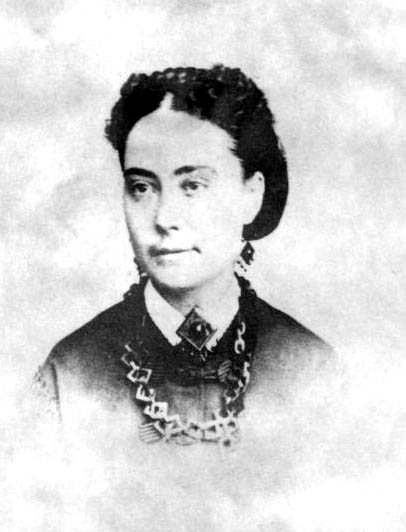Where did the Name Tallahassee Come from?
Tallahassee derives from the Muskogean language of the Creek and Hitchiti (Itsate) dialects. Tallahassee has served as the capital city of Florida since 1824.
Native Roots and Meaning
The name Tallahassee is thought to come from two words in the Creek language (a Muskogean language, like Itsate [Hitchiti]): “talwa” meaning “town” or “village”, and “hasi” or “hachi” meaning “old” or “abandoned”. Thus, Tallahassee can be interpreted as meaning “old town”, possibly a reference to an abandoned village.
This interpretation would make sense in light of the area’s history: the local oral tradition and archaeological evidence point to Tallahassee being the site of an abandoned Apalachee or Creek town. The old Spanish fort was built near a large Apalachee town that was abandoned by the time of the fort’s construction, which would support the interpretation of Tallahassee as meaning “old town”.
However, some linguists question whether "hasi" exists in standard Creek dictionaries. Instead, the term may derive from Itsate (Hitchiti), a closely related language spoken by Creek-affiliated peoples. Scholars have documented variations such as Tulahase, Tulahalse, and Tulahiwalse, place names used by Native groups in present-day Georgia and Alabama, which support the idea that Tallahassee may stem from these alternative dialects rather than classic Muscogee Creek alone.
Abandoned Pre-Columbian Mounds
Archaeological evidence suggests that Tallahassee has been inhabited for centuries. The Lake Jackson Mounds, a complex of large prehistoric earth mounds, is located in the city. These mounds are believed to have been constructed by the Apalachee, a group of Native Americans who lived in the area before the arrival of Europeans.
The Apalachee had a major village and ceremonial center near what is now Tallahassee, and some of the mounds in the city date back to this prehistoric culture. The presence of these mounds, along with the local oral tradition and the evidence of an abandoned Apalachee or Creek town in the area, supports the interpretation of Tallahassee as meaning “old town”.
Spanish Arrival and the Apalachee
In the 16th century, Spanish explorers arrived in the area and established contact with the Apalachee. The Apalachee were a group of Native Americans who lived in the region and were known for their large, well-organized towns. One of these towns was located near the present-day site of Tallahassee, and it is likely that this is the “old town” to which the city’s name refers.
During the 16th and 17th centuries, the Apalachee were an important political and economic force in the region. The Spanish built a fort near Tallahassee in the early 17th century, which served as a base for their operations in the area.
Over time, however, many of the Apalachee towns were abandoned, either due to disease, conflict, or the impact of Spanish colonization. This would support the interpretation of Tallahassee as meaning “old town”.
Creek and Seminole Migrations
In the 18th and 19th centuries, the Creek and later the Seminole moved into North Florida. The Creek were a group of Native Americans who spoke a Muskogean language and were closely related to the Apalachee.
As the Creek and later Seminole moved into the region, they may have begun to use the label “Tallahassee” to describe the area around the old Spanish fort, or to refer to the site of an old Apalachee town. This practice of using familiar linguistic patterns to describe new places and reinterpreting earlier Native names was common among Southeastern tribes.
Choosing the Name for Florida's Capital
In 1824, U.S. territorial officials chose the area as the new capital of Florida territory, in the years following Florida’s acquisition from Spain, as a compromise between the rival cities of St. Augustine and Pensacola, both of which had sought to be the capital.
At the time, the name “Tallahassee” was already in local use and was adopted as the name for the new capital city.
Variations in Spelling and Usage
Early written records of the city’s name show a variety of spellings, including “Tallasee”, “Talhassee”, and “Tallahassie”. These variants were common in the early years of the city’s history, when many Native words were being transliterated into English for the first time by settlers, missionaries, and mapmakers who were not familiar with the source languages.
Eventually, the spelling “Tallahassee” became the standard and is still used today.
The Combination and Octavia Walton's Influence

Octavia Walton, the daughter of Florida’s first elected governor, George Walton, played a role in the spelling and use of the city’s name. Octavia was an author and a prominent figure in Florida’s cultural life, and she is credited with popularizing the spelling “Tallahassee” over other variants.
While the exact process by which “talwa” and “hasi” were combined to form the name Tallahassee is not clear, it is likely that this occurred sometime in the late 18th or early 19th century, as the city was being settled and developed.
Octavia Walton and the Adoption of “Tallahassee”
Octavia Walton’s influence in Florida’s cultural life allowed her to shape the public perception of the city’s name. As a result of her efforts, “Tallahassee” gained widespread usage during the mid-19th century and became the commonly recognized name for the city.
Octavia Walton is a significant historical figure in the city’s history, and her contributions ensured that the name Tallahassee endured through time.
Comments